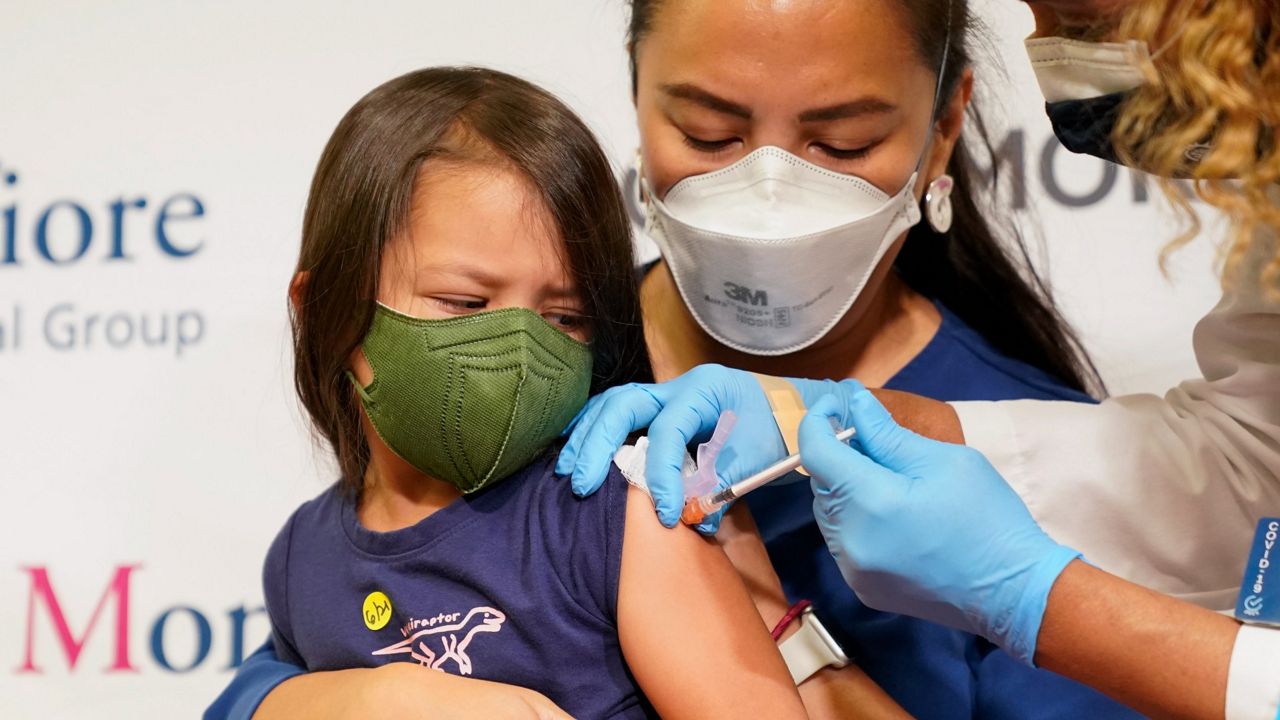The Food and Drug Administration on Thursday granted emergency use authorization to Moderna’s updated COVID-19 vaccine booster for children 6 months through 5 years of age.
What You Need To Know
- The Food and Drug Administration on Thursday granted emergency use authorization to Moderna’s updated COVID-19 vaccine booster for children 6 months through 5 years of age
- Federal regulators also approved the use of an updated shot by Pfizer and its German partner, BioNTech, that would replace the third dose in their primary series for 6-month-old to 4-year-old children
- The Centers for Disease Control and Prevention must still sign off on the new shots before they can become available to the public
- Moderna’s and Pfizer’s new bivalent shots target both the original strain of coronavirus that causes COVID-19 as well as the omicron BA.4 and BA.5 subvariants
Federal regulators also approved the use of an updated shot by Pfizer and its German partner, BioNTech, that would replace the third dose in their primary series for 6-month-old to 4-year-old children.
The Centers for Disease Control and Prevention must still sign off on the new shots before they can become available to the public.
Moderna’s and Pfizer’s new bivalent shots target both the original strain of coronavirus that causes COVID-19 as well as the omicron BA.4 and BA.5 subvariants.
“More children now have the opportunity to update their protection against COVID-19 with a bivalent COVID-19 vaccine, and we encourage parents and caregivers of those eligible to consider doing so — especially as we head into the holidays and winter months where more time will be spent indoors,” FDA Commissioner Dr. Robert Califf said in a statement.
“As this virus has changed, and immunity from previous COVID-19 vaccination wanes, the more people who keep up to date on COVID-19 vaccinations, the more benefit there will be for individuals, families and public health by helping prevent severe illnesses, hospitalizations, and deaths,” Califf added.
Young children would be eligible for Moderna’s new booster two months after completing their two-dose primary series of Moderna’s original vaccine.
For kids ages 6 months to 4 years receiving Pfizer’s three-dose primary series, they would receive the original shot for their first two doses and the updated shot for their final dose.
Young children who have completed Pfizer’s primary series would not yet eligible for any updated booster shot. The FDA says it expects to receive data on Pfizer’s updated booster dose in 6-month to 4-year-olds next month.
The agency added that children in that age group who have completed their primary Pfizer series “would still be expected to have protection against the most serious outcomes from the currently circulating omicron variant.”
The FDA said children who receive the new vaccines may experience similar side effects to those reported in individuals who were given earlier versions. Those side effects include a sore arm, a fever, lack of appetite and tiredness for a day or two.
“Vaccines remain the best defense against the most devastating consequences of disease caused by the currently circulating omicron variant, such as hospitalization and death,” Dr. Peter Marks, director of the FDA’s Center for Biologics Evaluation and Research, said in a statement. “Based on available data, the updated, bivalent vaccines are expected to provide increased protection against COVID-19.”
Moderna CEO Stéphane Bancel said the FDA’s authorization will provide “families with an important protective tool as we continue through the winter months.”
Vaccine uptake in general, however, has been slow for young children since regulators authorized primary series shots in June. According to CDC data, less than 5% of children 6 months to 4 years old have completed their primary series, and less than 10% have received a single shot.
Bivalent boosters have been available for Americans ages 5 years and older since October.
The BA.4 and BA.5 subvariants circulated widely in the U.S. over the summer. BA.4 has almost completely faded since, and BA.5 accounts for about 14% of new infections. Newer omicron variants BQ.1 and BQ.1.1, meanwhile, now account for about 63% of cases combined.



